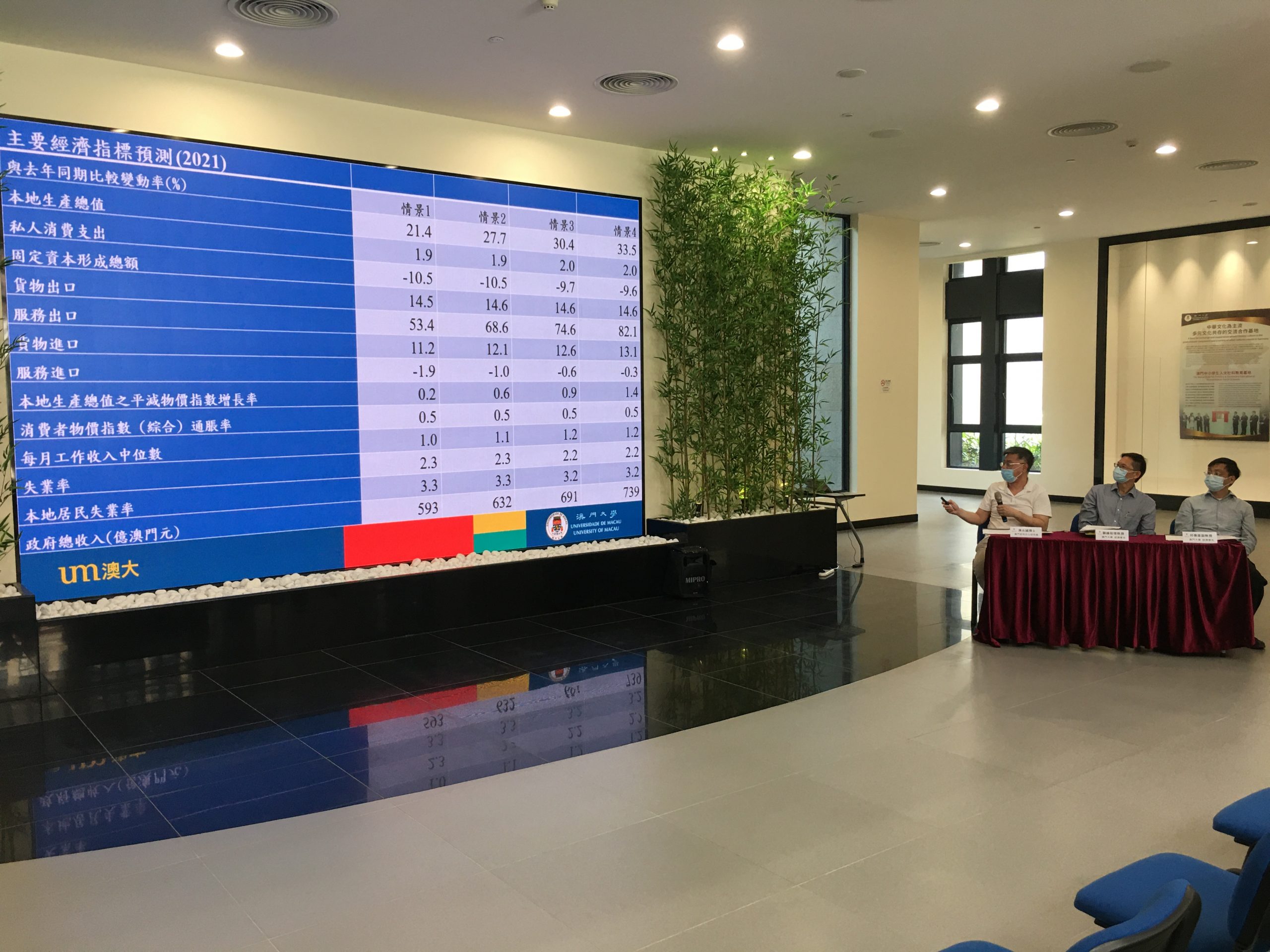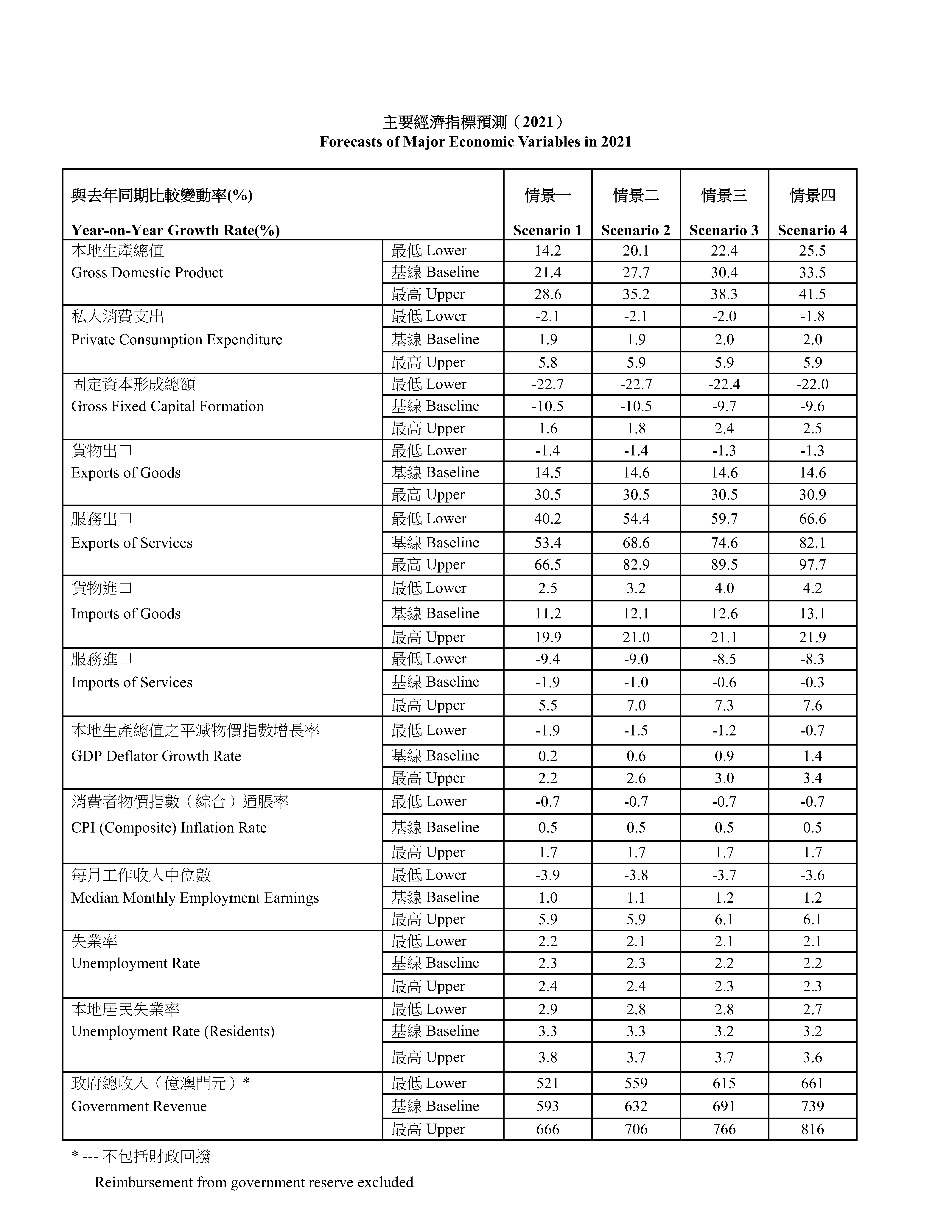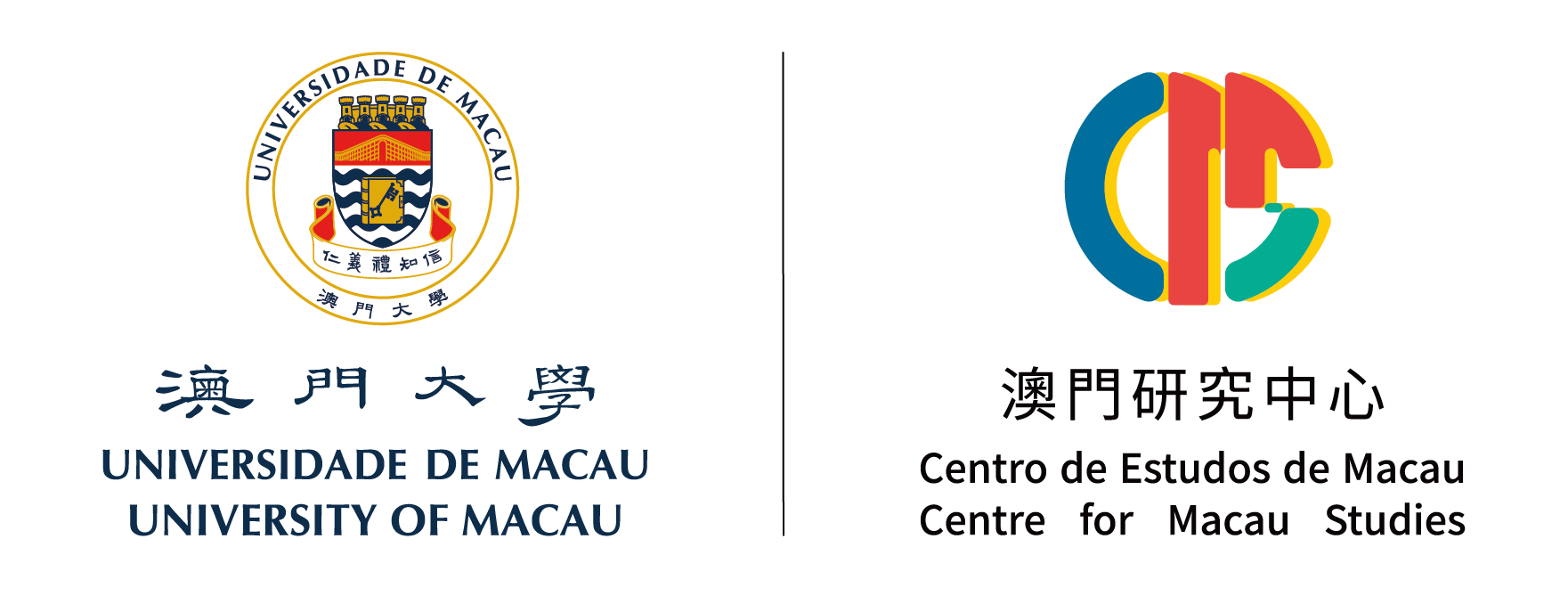The University of Macau’s (UM) Centre for Macau Studies and Department of Economics today (7 April) released the 2021 Macao Macroeconomic Forecast. According to the forecast, the baseline forecast of Macao’s economic growth are between 21.4 per cent and 33.5 per cent; the baseline forecast of the growth in the exports of services are between 53.4 per cent and 82.1 per cent; the unemployment rate is projected to decline; government revenue (reimbursement from government reserve excluded) is projected to be between MOP 59.3 billion and MOP 73.9 billion.
In 2020, the COVID-19 pandemic raged across the world. In response, the Macao SAR government adopted stringent travel restrictions to protect the health of its residents. As a result, total visitor arrivals to Macao in 2020 plummeted by 85.0 per cent to 5.9 million; service exports fell by 74.9 per cent, and GDP contracted by 56.3 per cent. At the beginning of 2021, with the successful development of vaccines and the start of the vaccination process, Macao’s travel restrictions are expected to be gradually relaxed, and the number of tourists to Macao is expected to increase. In this context, UM’s Centre for Macau Studies and Department of Economics released the 2021 Macao Macroeconomic Forecast, which was based on the Macroeconometric Structural Model of Macao. The specifics of the forecast are as follows:
Due to the lack of a clear process of vaccination and the uncertainty regarding the speed of the Macao SAR government’s relaxation of travel restrictions, the research team of the Macroeconometric Structural Model of Macao contemplated different scenarios for the number of visitor arrivals in 2021 to reflect different recovery speeds. The numbers of total visitor arrivals in four different scenarios are 13.8 million visitor arrivals (35% of the number in 2019), 17.7 million visitor arrivals(45% of the number in 2019), 19.7 million visitor arrivals (50% of the number in 2019), and 21.7 million visitor arrivals (55% of the number in 2019), respectively.
Based on the above four scenarios, the forecasts of major economic variables are as follows:
• The baseline forecast of Macao’s economic growth are 21.4%, 27.7%, 30.4%, and 33.5% respectively. The highest and the lowest values range between 14.2% and 41.5%.
• The baseline forecast of the growth in the exports of services are 53.4%, 68.6%, 74.6%, and 82.1%, respectively.
• The baseline forecast of personal consumption growth is approximately 2%.
• Total gross fixed capital formation is projected to decrease by 10%. If government gross fixed capital formation increases substantially, the decline will significantly slow down.
• The inflation rate measured by GDP deflator or consumer price is expected to increase by 0.2% to 1.4%.
• Median monthly employment earnings are projected to increase by 1%.
• The unemployment rate is projected to be between 2.2% to 2.3%, as compared to 2.5% in 2020. Excluding non-resident workers, the unemployment rate among residents is projected to range between 3.2% and 3.3%, as compared to 3.6% in 2020.
• Government revenue (reimbursement from government reserve excluded) is projected to be between MOP 59.3 billion and MOP 73.9 billion.
Macao experienced a severe economic contraction in 2020. Although there will be a recovery in 2021, the projected GDP does not yet reach the level of 2019, and the income of many residents has fallen. How to use government resources to help them is still a issue that the Macao SAR government has to face.
It must be pointed out that the assumptions used in the forecast model will change in response to the development of the COVID-19 pandemic and government policies. The forecast will be updated if necessary and announced in due time.
About the Macroeconometric Structural Model of Macao
The Macroeconometric Structural Model of Macao is a quarterly simultaneous-equations econometric model which covers seven blocks of Macao’s economy: consumption, investment, external sector, prices, government, labour market, and monetary sector. It includes 89 equations and 276 variables. Time series data start from the first quarter of 1998 and are updated once new data are available. Its results provide the community with a timely understanding of the state of Macao’s economy and support prudent decision-making. The model was founded by the late Prof Sir James Mirrlees, winner of the Nobel Prize in Economic Sciences and honorary doctor of social sciences of UM, as well as faculty members in UM’s Department of Economics. Project members include Dr Chan Chi Shing, an adjust lecturer in the Centre for Macau Studies; Prof Ho Wai Hong, an associate professor in the Department of Economics; and Prof Kwan Fung, an assistant professor in the Department of Economics.



